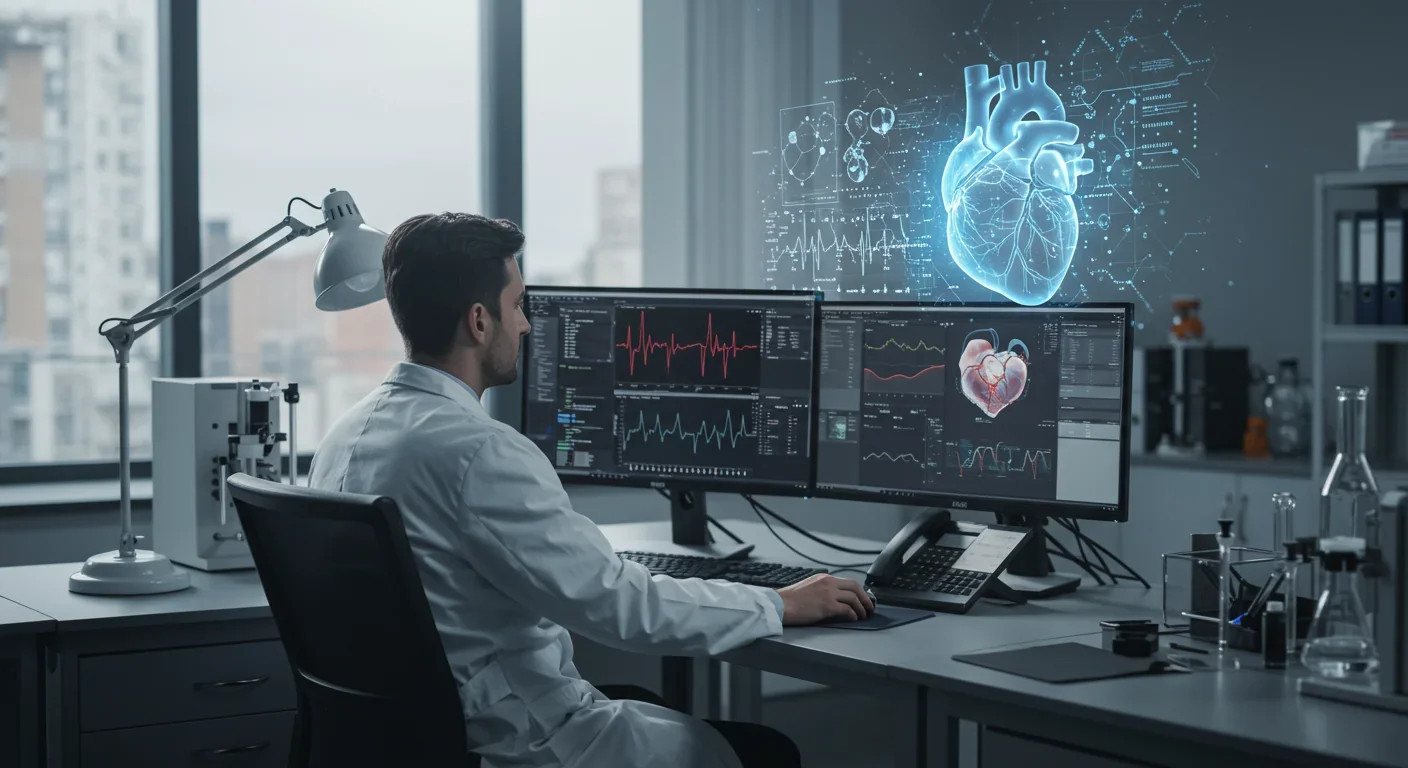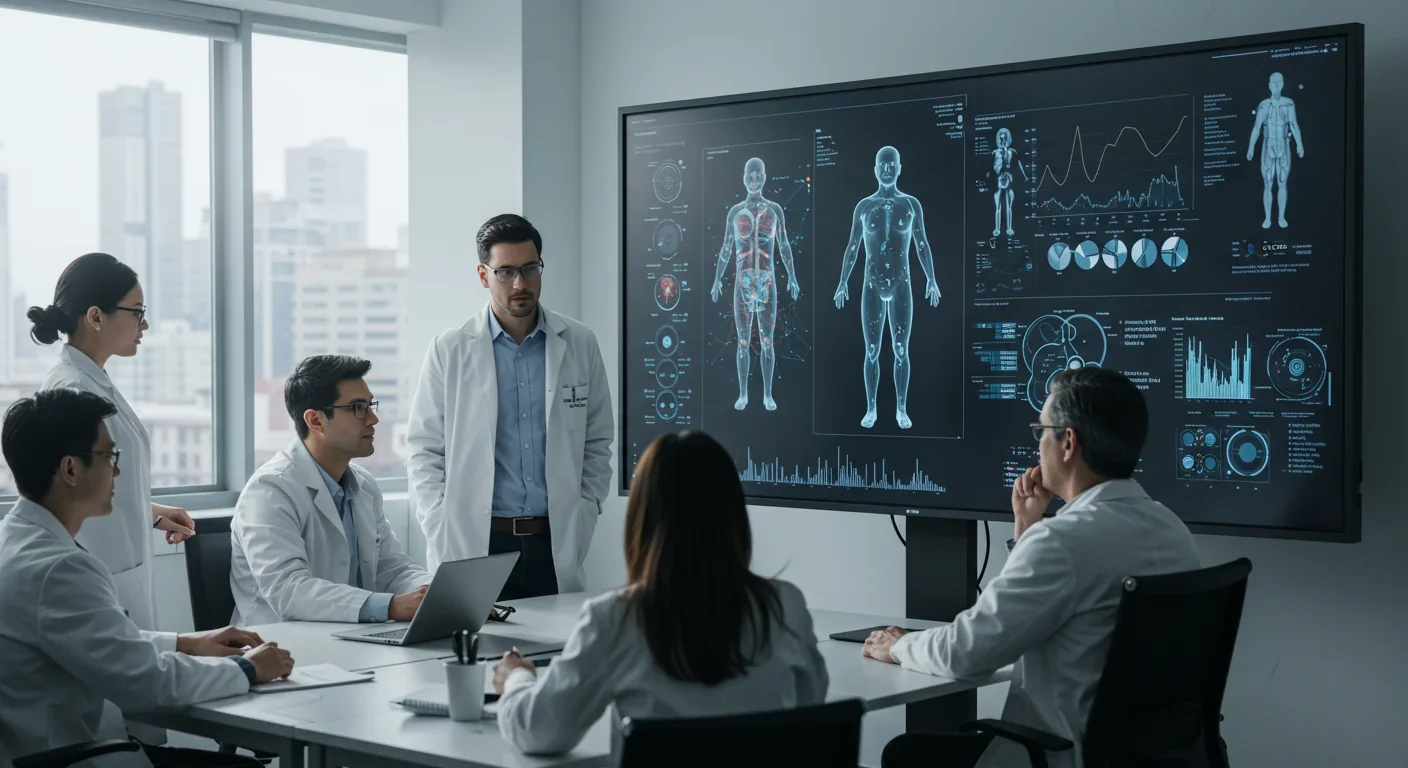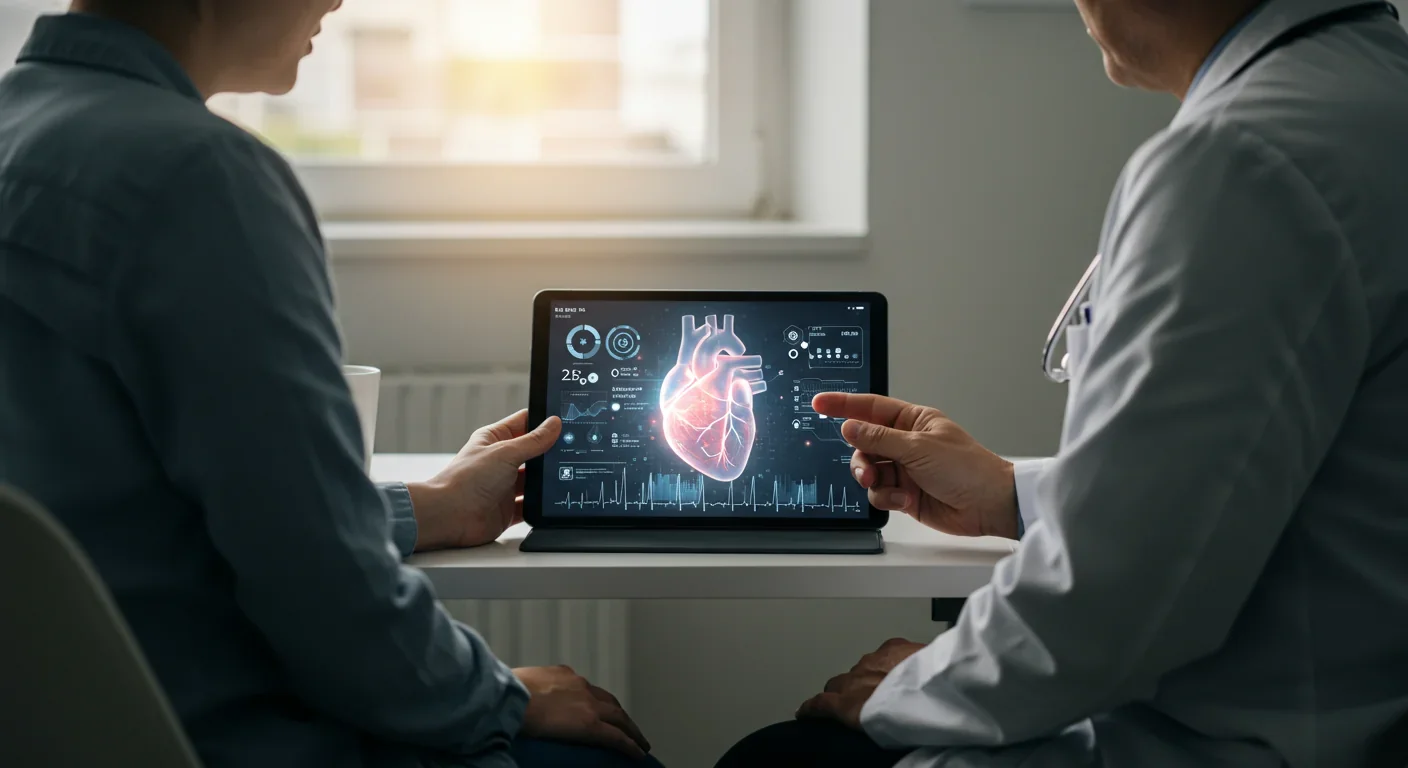Ultrafine Particles Breach Brain Barriers: Hidden Risk

TL;DR: Digital twins are virtual organ replicas that predict drug responses before human trials, potentially slashing development time by 20% and saving billions. Companies like Sanofi already use AI-powered models to test medications on simulated patients, though validation, data quality, and regulatory challenges remain.

Within the next five years, your doctor might test a new medication on a virtual replica of your heart before you ever swallow a pill. This isn't science fiction. Pharmaceutical companies like Sanofi are already using AI-generated digital twins to predict how patients will respond to drugs, aiming to slash testing periods by 20% and save $100 million per trial. The technology promises to answer a question that has plagued medicine for centuries: will this treatment work for you, specifically, or are you about to become an expensive statistic in someone else's clinical trial?
Digital twins are computational models that replicate human organs down to the cellular level. These aren't simple 3D animations. They integrate real patient data from MRI scans, CT images, genetic profiles, and electronic health records to create dynamic simulations that respond to drugs exactly as your actual organs would. When researchers at Adsilico built their digital heart platform, they trained it on thousands of cardiovascular datasets from real patients, encoding everything from blood pressure and age to ethnic background and disease progression.
The implications are staggering. Dr. Sheena Macpherson, CEO of Adsilico, explains that these synthetic hearts can test the same medication under wildly different conditions: low versus high blood pressure, early versus late-stage heart failure, young versus elderly patients. All without recruiting a single human volunteer. Meanwhile, MIT Technology Review reports that researchers are building digital twins of livers, kidneys, and even entire tumor microenvironments, each one calibrated to mirror how diseases actually behave in living tissue.
Medicine has always struggled with the problem of individual variation. For most of human history, doctors treated everyone the same, applying one-size-fits-all remedies that worked brilliantly for some patients and killed others. The 20th century brought clinical trials, which improved the odds but still reduced patients to statistical averages. If a drug worked for 60% of trial participants, it got approved, even though 40% saw no benefit or suffered serious side effects.
The first real shift toward personalization came with pharmacogenomics in the 1990s, when scientists discovered that genetic variations affect how people metabolize drugs. Suddenly, doctors could predict that certain patients would need higher or lower doses based on their DNA. But pharmacogenomics only solved part of the puzzle. It couldn't predict how a drug would interact with your specific disease, your particular organ damage, or your unique immune response.
Digital twins represent the next evolutionary leap. Like the telescope extended our vision and the microscope revealed hidden worlds, virtual organ models let us see inside the black box of human physiology in ways that were impossible before. We can now run experiments on a digital version of your liver, testing thousands of dosing scenarios in hours rather than months. We can watch how a chemotherapy drug would attack your tumor, not some average cancer cell line grown in a lab.
Building a digital twin starts with data collection. Doctors gather high-resolution medical images using MRI or CT scans, which map the structure of your organ in three dimensions. They add your genetic profile, blood biomarkers, medical history, and real-time physiological measurements like heart rate variability or blood glucose levels. This raw data feeds into machine learning algorithms trained on millions of patient records.
The AI doesn't just memorize patterns. It learns the underlying biological rules, the cause-and-effect relationships that govern how cells respond to chemical signals, how blood flows through vessels, and how tissues repair themselves after injury. Research published in PLOS One describes systems that simulate organ-on-chip devices with startling accuracy, predicting how liver cells metabolize toxins or how heart muscle contracts under stress.
Once the model is built, researchers can run virtual experiments. Want to know if Drug A will cause liver damage at twice the standard dose? The digital twin processes the virtual medication, simulating how your liver enzymes break it down, whether toxic byproducts accumulate, and if inflammation markers spike. The simulation produces quantitative predictions: 78% chance of elevated liver enzymes, 12% risk of acute toxicity, optimal dose of 150mg rather than 200mg.
The most sophisticated platforms, like those developed by Dassault Systèmes, combine physics-based modeling with AI. The physics ensures biological realism, the laws of chemistry and fluid dynamics that govern organ function. The AI fills in the gaps, learning from real patient outcomes to refine predictions over time. As more patients use these systems, the models get smarter, creating a feedback loop that continuously improves accuracy.

The traditional drug development pipeline is brutally inefficient. Nine out of ten experimental drugs fail in clinical trials, often after companies have spent hundreds of millions of dollars and a decade of work. Many failures happen because animal models don't predict human responses, or because early trials tested drugs in the wrong patient populations.
Digital twins attack this problem at multiple stages. During early discovery, pharmaceutical companies use virtual organs to screen thousands of drug candidates, eliminating compounds likely to cause toxicity before they ever reach animal testing. Sanofi's platform creates simulated patients with different genetic profiles, disease severities, and comorbidities, then tests how each virtual patient responds to experimental treatments. This lets researchers identify which patient subgroups benefit most, designing better clinical trials that enroll the right people from the start.
In oncology, the transformation is even more dramatic. Cancer is wildly heterogeneous: two patients with "the same" lung cancer often have tumors driven by completely different genetic mutations. Digital twins let doctors build personalized models of each patient's specific tumor, then test every available chemotherapy regimen virtually before choosing the one most likely to work. Studies in Genome Medicine show that these tumor twins can predict treatment responses with 85-90% accuracy, sparing patients from ineffective chemotherapy and its devastating side effects.
The technology also addresses a problem that has plagued clinical trials for decades: lack of diversity. Traditional studies overrepresent white males, leaving huge gaps in our understanding of how drugs work in women, people of color, or patients with rare genetic variants. Adsilico's synthetic hearts can encode ethnic backgrounds and health conditions typically excluded from trials, generating data for populations that researchers struggle to recruit. This doesn't replace real clinical trials, but it identifies potential safety issues earlier, making trials more targeted and inclusive.
The financial implications are staggering. Developing a new drug costs roughly $2.6 billion when you account for all the failed candidates. If digital twins increase success rates by even 10%, pharmaceutical companies save hundreds of millions per approved drug. Market analysts project that the digital twin healthcare market will reach $21 billion by 2028, driven largely by cost reductions in drug development and clinical trials.
Consider what Sanofi's 20% reduction in testing time means in practice. Clinical trials for a major drug might take eight years from first human dose to regulatory approval. Cutting that to six-and-a-half years means patients get life-saving treatments 18 months earlier, and patent protection lasts longer, improving return on investment. The company's projected $100 million savings per drug program would, across their entire pipeline, amount to billions in recovered value.
But economic disruption cuts both ways. Contract research organizations that run clinical trials could see demand shrink as virtual testing replaces some human studies. Animal research facilities face an existential threat, if Dr. Macpherson's prediction that digital twins will eventually eliminate animal testing proves correct. Regulatory agencies like the FDA must figure out how to validate these new tools, creating standards for what counts as sufficient evidence.
There's also the question of who owns your digital twin. If a pharmaceutical company builds a model of your heart using your medical data, does that model belong to you, the company, or the hospital that collected the scans? These ownership questions will shape the economics of the entire industry, determining whether digital twins democratize medicine or create new forms of data monopoly.
For all their promise, digital twins face serious challenges. The most fundamental is validation: how do we know these models actually work? A simulation might predict that Drug X is safe, but if it causes heart attacks in real patients, the entire system collapses. Research in Annual Reviews emphasizes that current models excel at predicting known biology but struggle with unexpected interactions, rare side effects, or long-term consequences that emerge over years.
Data quality is another critical issue. Digital twins are only as good as the information fed into them. If your medical records are incomplete, if genetic sequencing missed a crucial variant, or if the AI was trained on biased datasets, predictions will be wrong. The healthcare system's existing disparities could actually worsen if underrepresented populations have lower-quality data, resulting in less accurate digital twins and poorer treatment outcomes.
Then there's the problem of complexity. The human body is an interconnected system, not a collection of isolated organs. A drug that looks safe in a digital liver might cause problems when you account for how it affects the kidneys, brain, and immune system simultaneously. Building whole-body digital twins that capture these interactions is exponentially harder than modeling single organs, and we're still in the early stages of that work.
Regulatory hurdles loom large. The FDA currently has no clear pathway for approving drugs tested primarily on digital twins. How much virtual evidence is enough? Do you still need full human trials, or can you skip straight to smaller confirmatory studies? Translational medicine research suggests that regulators are moving cautiously, requiring digital twins to prove themselves alongside traditional methods rather than replacing them outright.
There's also the risk of over-reliance. If doctors trust digital predictions too completely, they might miss warning signs that don't show up in models. Medicine is full of surprises, biological edge cases that defy statistical prediction. Digital twins are powerful tools, not crystal balls.

The digital twin revolution is playing out differently across the world, shaped by each nation's healthcare system, regulatory environment, and technological capabilities. Europe has emerged as an early leader, driven by strong data privacy laws and government investment in digital health infrastructure. The European Union's In Silico Trials initiative aims to make computational models a standard part of drug approval by 2030, backed by €100 million in research funding.
China is moving aggressively, leveraging its massive patient datasets and fewer regulatory constraints. Chinese researchers are building digital twins for traditional medicine applications, testing how ancient herbal remedies interact with modern pharmaceuticals. The country's integrated healthcare system, where hospitals share data more freely than in the West, gives them a significant advantage in training AI models.
The United States has more fragmented progress. While companies like Sanofi push forward, the FDA remains cautious, still defining what evidence standards should look like. American researchers lead in some technical areas, particularly in cancer digital twins, but privacy laws like HIPAA make it harder to aggregate the massive datasets needed to train accurate models.
Developing nations face different challenges. Building digital twins requires expensive imaging equipment, genetic sequencing capacity, and AI expertise that many countries lack. There's a real risk that this technology widens global health inequities, creating a world where wealthy patients in rich countries get personalized virtual testing while everyone else receives one-size-fits-all treatments.
International collaboration offers hope. The Virtual Human Platform initiative brings together researchers from Japan, South Korea, and Singapore to build open-source organ models that any country can use. If these efforts succeed, digital twins could eventually reduce costs enough to benefit healthcare systems worldwide.
The digital twin revolution will reshape medicine whether you're a patient, doctor, or healthcare investor. For patients, the first changes will be subtle. Your oncologist might mention running your tumor data through a predictive model. Your cardiologist might reference a digital simulation when choosing between blood pressure medications. Within a decade, having a personal digital twin could become as routine as getting bloodwork.
Healthcare professionals need to start building digital literacy now. Understanding how these models work, what their limitations are, and how to interpret predictions will become essential skills. Medical schools are beginning to add computational medicine to curricula, but practicing physicians will need continuing education to keep pace.
For the pharmaceutical industry, the message is clear: adapt or die. Companies that master digital twin technology will develop drugs faster and cheaper than competitors stuck with traditional methods. We're likely to see a wave of acquisitions as big pharma buys up startups with the best modeling platforms.
Policymakers face urgent questions about regulation, data governance, and equity. Should insurance companies be allowed to use digital twin predictions to set premiums? What happens when your virtual model predicts disease risk decades before symptoms appear? How do we ensure that the benefits of this technology reach beyond wealthy early adopters?
The most profound impact might be psychological. Personalized medicine forces us to confront our individual vulnerability in new ways. A digital twin that predicts you'll respond poorly to standard treatment is empowering and terrifying. We'll need new frameworks for discussing risk, uncertainty, and medical decision-making in an era when predictions become eerily precise.
One thing is certain: the age of average patients and average treatments is ending. Digital twins represent medicine's leap from treating populations to healing individuals, from statistical guesswork to biological precision. The technology is imperfect, the challenges are real, and the timeline is uncertain. But the direction of travel is clear. Your virtual self is coming, and it's going to change everything about how we understand health, disease, and what it means to be uniquely human.

MOND proposes gravity changes at low accelerations, explaining galaxy rotation without dark matter. While it predicts thousands of galaxies correctly, it struggles with clusters and cosmology, keeping the dark matter debate alive.

Ultrafine pollution particles smaller than 100 nanometers can bypass the blood-brain barrier through the olfactory nerve and bloodstream, depositing in brain tissue where they trigger neuroinflammation linked to dementia and neurological disorders, yet remain completely unregulated by current air quality standards.

CAES stores excess renewable energy by compressing air in underground caverns, then releases it through turbines during peak demand. New advanced adiabatic systems achieve 70%+ efficiency, making this decades-old technology suddenly competitive for long-duration grid storage.

Our brains are hardwired to see patterns in randomness, causing the gambler's fallacy—the mistaken belief that past random events influence future probabilities. This cognitive bias costs people millions in casinos, investments, and daily decisions.

Forests operate as synchronized living systems with molecular clocks that coordinate metabolism from individual cells to entire ecosystems, creating rhythmic patterns that affect global carbon cycles and climate feedback loops.

Generation Z is the first cohort to come of age amid a polycrisis - interconnected global failures spanning climate, economy, democracy, and health. This cascading reality is fundamentally reshaping how young people think, plan their lives, and organize for change.

Zero-trust security eliminates implicit network trust by requiring continuous verification of every access request. Organizations are rapidly adopting this architecture to address cloud computing, remote work, and sophisticated threats that rendered perimeter defenses obsolete.